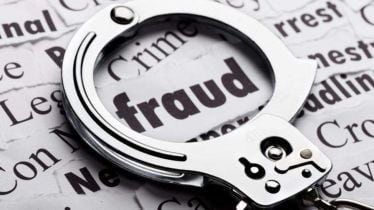By Nitin Kumar
Rajesh (name changed) wanted to renew his car insurance. On a website that bore the resemblance of a reputable insurance company, he entered his contact details.
Soon, he got a call from a person who claimed to be a bona fide company representative. He presented Rajesh with an enticing offer – a policy that required no tiresome physical verification if he chose to buy through this ‘special’ channel. Convenience won the day, Rajesh made a payment, and received what appeared to be a legitimate policy document.
When it was time to renew, Rajesh dialled the customer care number. To his dismay, there was no trace of his insurance plan in the company’s database. He reached out to the agent, only to discover the number didn’t exist. He checked his policy document closely, and saw some pages declared it as a motor insurance policy, while others asserted it was medical or life insurance.
Rajesh had fallen victim to a cunning insurance fraud.
Motor insurance frauds
While Rajesh lost the money that he paid the con, it could have been worse had his car met with an accident. There would have been no policy cover; not to mention the legal implications of driving a car without valid insurance.
His tale isn’t unique. Motor insurance frauds are common, and these are of different types:
Ghost agents: These con artists impersonate legitimate insurance agents or company representatives to sell policies that don’t exist. Just like Rajesh, victims are lured in by the promise of convenience.
Misselling insurance: Even genuine insurance agents can sometimes missell products, exaggerating benefits and features to close a sale. These misrepresentations can lead to disappointment and financial strain when policyholders discover their coverage falls short of what was promised.
Stolen premiums: Dishonest agents pocket premium payments instead of forwarding them to the insurance company, leaving policyholders unknowingly uninsured. They may do it by making the policyholder pay them posing as an agent, or they may even impersonate the insurance company itself.
False documents: Fake policy documents are used to dupe individuals into thinking they are adequately insured.
Policy flipping: Some nefarious agents sell genuine policies but ‘flip’ them without the customer’s knowledge. This involves altering policy details after purchase to benefit the fraudster.
Guarding against fraud
Here are some practical tips:
Buy online: Online medium is visibly more transparent and more trackable. Everything is on record, so whenever possible, buy insurance directly online from the insurer or trusted aggregator. This eliminates intermediaries who may have ulterior motives. But pick reputed aggregators.
Get premium receipts: Demand and retain premium payment receipts for every transaction. These serve as a record of your payments.
Cross-check with customer care: Before finalising your policy, call the insurer’s customer care to ensure the policy details match their records. It can help you verify the authenticity of your coverage.
Read the policy document: Thoroughly review your policy document, paying special attention to the fine print. Ensure that it accurately reflects the coverage you expect.
Secure payment methods: Use secure payment methods, such as cheques or reputable online platforms. Check beneficiary details carefully before making payments.
Never sign blank forms: This is a common practice that insurance agents use, citing convenience. Never sign blank insurance application forms and leave the agent to fill in the details. Complete all forms yourself.
The world of insurance, like any other financial domain, has its share of pitfalls and potential frauds. Being vigilant, informed and cautious is your best defence.
The author is head, Motor Insurance, Policybazaar.com
